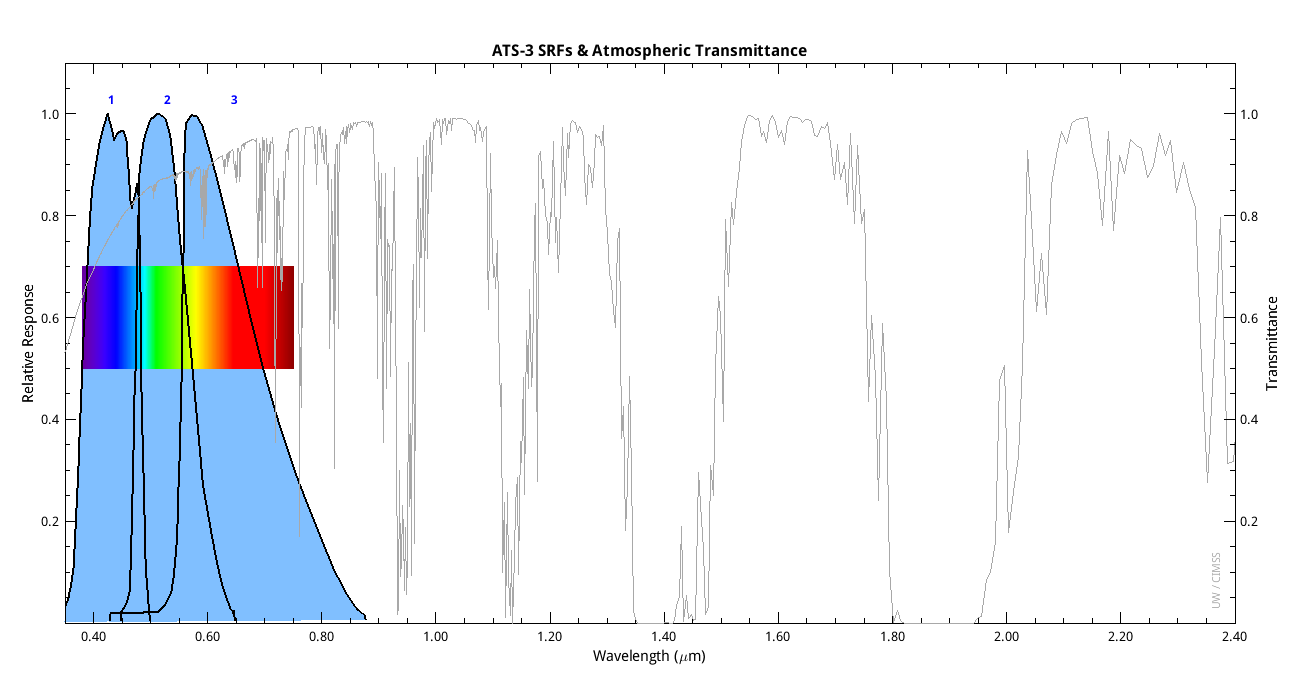
[ Archive ]

 |
CIMSS-NOAA Weekly Report [ Archive ] |
 |
CIMSS-NOAA WEEKLY HIGHLIGHTS FOR THE WEEK ENDING MARCH 15, 2024
DATA, INFORMATION, AND USE-INSPIRED SCIENCE:
Posting Early GOES SRFs for Radiative Transfer Community: Researchers at the Cooperative Institute for Meteorological Satellite Studies (CIMSS) received digitized spectral response functions (SRFs) from Tim Schmit (NOAA/NESDIS/STAR) for the purpose of posting and making available to the satellite meteorology community and also specifically for use by the RTTOV (Radiative Transfer for TOVS) team for that fast forward radiative transfer model. CIMSS interpolated these to a uniform spectral spacing in wavenumbers and posted the SRF files as well as plots, central wavenumbers, and Planck Function Coefficients for converting radiance to brightness temperature on the CIMSS website. SRFs of the Spin Scan Cloud Camera (SSCC) on ATS-1 (1 visible band) and ATS-3 (3 visible bands), the infrared and visible bands of the Visible Infrared Spin-Scan Radiometer (VISSR ) on a Synchronous Meteorological Satellite (SMS), and VAS-F (GOES-6) visible SRFs have been processed and posted at http://cimss.ssec.wisc.edu/goes/calibration/. (M. Gunshor, CIMSS, 608-263-1146, T. Schmit, E/RA2, 608-263-0291, tim.j.schmit@noaa.gov)
 (Click image to enlarge)
(Click image to enlarge)
Figure: The spectral response functions of the three visible bands of the Spin Scan Cloud Camera (SSCC) on ATS-3, which launched in 1967.
FUTURE OUTLOOK:
AWARDS AND RECOGNITION:
TRAVEL AND MEETINGS:
Visit to APRFC and NWS Alaska: Cooperative Institute for Meteorological Satellite Studies (CIMSS) Scientist William Straka visited the Alaska Pacific River Forecast Center (APRFC) and the NWS regional office for Alaska at the invitation of APRFC to discuss plans for the upcoming breakup season as well as provide insight into new products and satellite data that will be available this season in addition to providing information on plans for the future. Multiple in-person discussions took place, both with APRFC personel as well as personel from NWS Alaska Regional office and the Regional Scientist for NOAA NWS Alaska Region. In addition, two presentations were given, highlighting the current and upcoming River/Ice and Flood products to be used in the next river ice breakup season, as well as a presentation that covered current and future satellite systems and information on products related to fire, soil moisture, the cryosphere and River/Ice and flooding. There was also an opportunity to brief forecasting personnel at Joint Base Elmendorf–Richardson (JBER), which was particularly important given that they were unaware of the products. Feedback from all of the meetings was provided to the LEO program, which will hopefully help shape the next generation of LEO Satellites. In addition, several contacts were developed for future collaboration. (W. Straka III, CIMSS)
TRAINING AND EDUCATION:
MEDIA INTERACTIONS AND REQUESTS:
SOCIAL MEDIA AND BLOG Posts:
PUBLICATIONS:
OTHER:
| Archived Weeklies Page | Submit a report item |